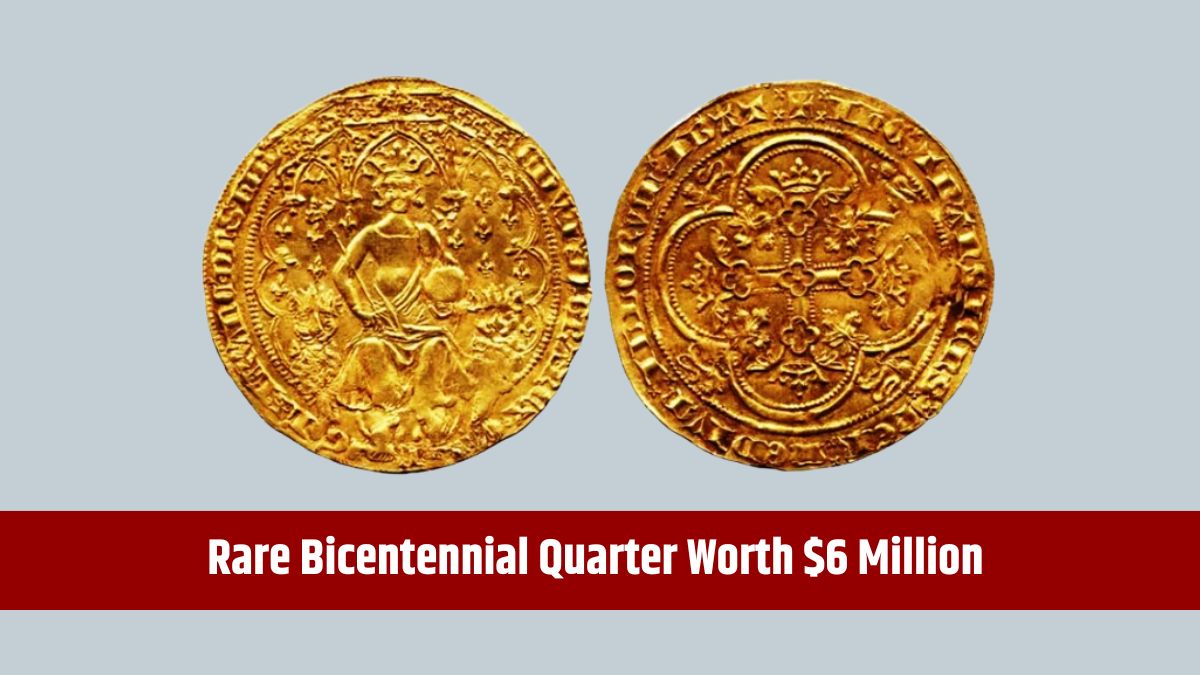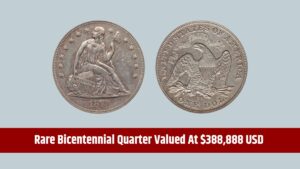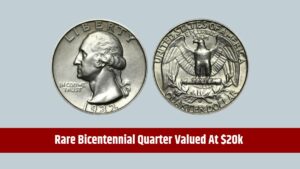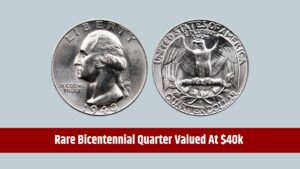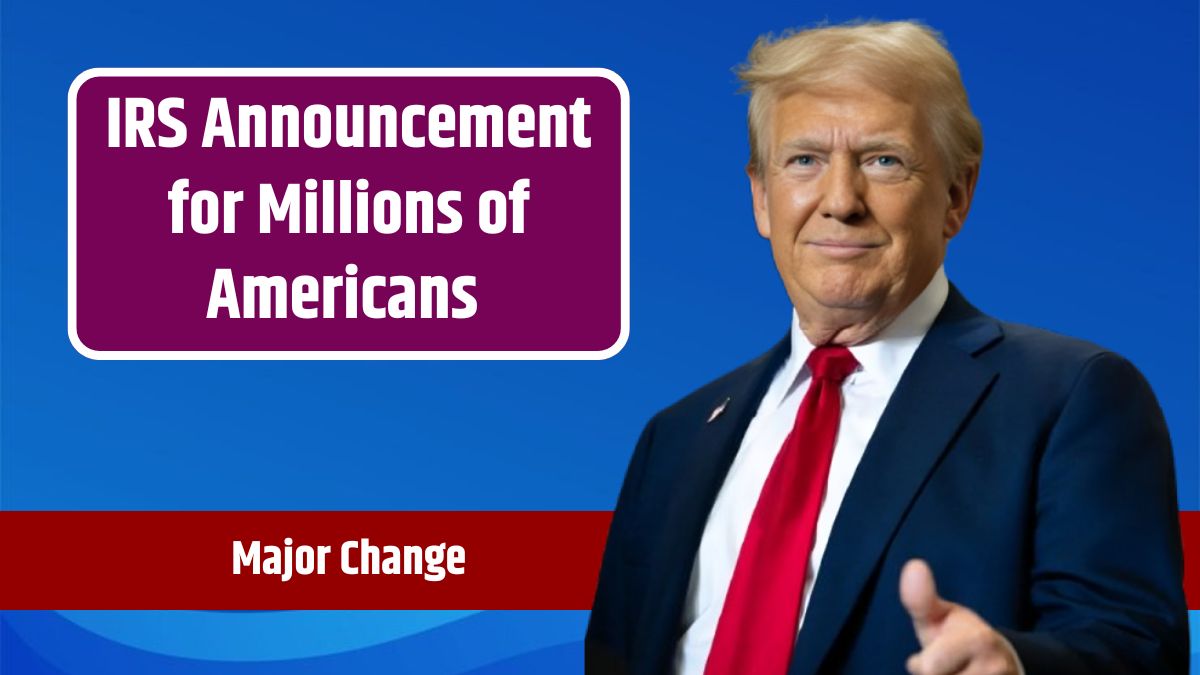The world of coin collecting is rich with treasures, each coin bearing its own unique history and often holding substantial value. Among these, the Bicentennial Quarter stands out, captivating collectors with its historical and monetary significance. Here, we look into the details of this remarkable quarter and six other coins, each valued at over $30 million USD, to reveal the incredible stories and rarities within the world of numismatics.
Bicentennial Quarter
Issued in 1976 to commemorate 200 years of American independence, the Bicentennial Quarter is a patriotic piece of history. While most Bicentennial Quarters are worth face value, a rare variant struck in 40% silver with a special mint mark can be worth nearly $1 million. This extraordinary variant is beloved for its unique design, which features a drummer boy and a torch encircled by 13 stars, symbolizing the original colonies. Limited production, pristine condition, and historical importance make this coin highly valuable to collectors.
| Feature | Details |
|---|---|
| Year of Release | 1976 |
| Estimated Value | Nearly $1 million USD |
| Design | Drummer boy, torch, and 13 stars |
| Significance | Commemorates U.S. bicentennial, unique silver variant |
Flowing Hair Silver/Copper
The Flowing Hair Silver/Copper Dollar, minted in 1794 and 1795, holds a special place in American history as one of the first dollar coins issued by the U.S. federal government. This coin, valued at over $30 million, is prized for its historical importance and extreme rarity. Featuring Lady Liberty on the obverse and an eagle on the reverse, this coin embodies the ideals of the newly established nation. Few specimens remain today, making it one of the most valuable and highly sought-after coins in the world.
| Feature | Details |
|---|---|
| Year of Minting | 1794–1795 |
| Estimated Value | Over $30 million USD |
| Design | Lady Liberty and eagle |
| Significance | First U.S. federal dollar coin, highly rare |
Double Eagle
Valued at over $30 million, the 1933 Double Eagle is a coin that marries beauty with intrigue. Originally minted with a face value of $20, this coin features Lady Liberty striding forward and an eagle in flight. Due to the Gold Reserve Act of 1934, nearly all of these coins were melted down, leaving only a few surviving examples. Legal battles and its fascinating backstory have made this coin a true collector’s gem.
| Feature | Details |
|---|---|
| Year of Minting | 1933 |
| Estimated Value | Over $30 million USD |
| Design | Lady Liberty and eagle in flight |
| Significance | Rare due to 1934 Gold Reserve Act |
Brasher Doubloon
The Brasher Doubloon, minted in 1787 by New York goldsmith Ephraim Brasher, is valued at over $30 million. This coin, created before the U.S. Mint was established, is considered America’s first gold coin. Featuring an eagle with a shield and the motto “E PLURIBUS UNUM,” it symbolizes the new nation’s spirit of independence. Brasher’s quest to mint his own coins adds to the historical value of this coin, making it a prized piece for collectors.
| Feature | Details |
|---|---|
| Year of Minting | 1787 |
| Estimated Value | Over $30 million USD |
| Design | Eagle with shield, “E PLURIBUS UNUM” |
| Significance | First American gold coin, predates U.S. Mint |
Saint-Gaudens Double Eagle
The 1907 Saint-Gaudens Double Eagle is considered one of the most beautiful coins ever minted in the United States. Created at the request of President Theodore Roosevelt, this coin, valued at over $30 million, was designed by famed sculptor Augustus Saint-Gaudens. Its high-relief design showcases Liberty holding a torch and olive branch on one side, with an eagle in flight on the other. The coin’s artistry and limited high-relief edition make it a standout in numismatics.
| Feature | Details |
|---|---|
| Year of Minting | 1907 |
| Estimated Value | Over $30 million USD |
| Design | Liberty and eagle in flight |
| Significance | Designed by Augustus Saint-Gaudens |
Liberty Head Nickel
The 1913 Liberty Head Nickel, with a valuation over $30 million, is one of the rarest coins in American history. This coin was struck in a year when no nickels were officially supposed to be minted, resulting in only five known specimens. Featuring Liberty on the obverse and a Roman numeral “V” on the reverse, this unauthorized production is one of the most intriguing mistakes in U.S. coinage and a prized collectible.
| Feature | Details |
|---|---|
| Year of Minting | 1913 |
| Estimated Value | Over $30 million USD |
| Design | Liberty Head with Roman numeral “V” |
| Significance | Unauthorized minting, extremely rare |
Edward III Florin
The Edward III Florin, minted in 1343, is a rare medieval English gold coin valued at over $30 million. This historic coin is one of the earliest gold coins produced in England and features the royal seal of King Edward III. Its age and scarcity make it highly coveted among collectors, representing an enduring piece of English royal history.
| Feature | Details |
|---|---|
| Year of Minting | 1343 |
| Estimated Value | Over $30 million USD |
| Design | Royal seal of King Edward III |
| Significance | Rare early English gold coin, historical artifact |
Each of these coins embodies the beauty, history, and artistry of numismatics, offering a window into the eras in which they were created. Whether they’re symbols of independence, unintended minting errors, or tokens of medieval royalty, these coins continue to fascinate collectors and historians alike.
FAQs
Why is the Bicentennial Quarter valuable?
The rare silver variant with a special mint mark can be worth nearly $1 million.
What makes the 1933 Double Eagle so rare?
Most were melted due to the Gold Reserve Act, with few surviving examples.
How many 1913 Liberty Head Nickels exist?
Only five are known, making it extremely rare.
What is special about the Brasher Doubloon?
It is considered America’s first gold coin, minted before the U.S. Mint.
Why is the Edward III Florin so valuable?
Its rarity and status as an early English gold coin contribute to its value.
